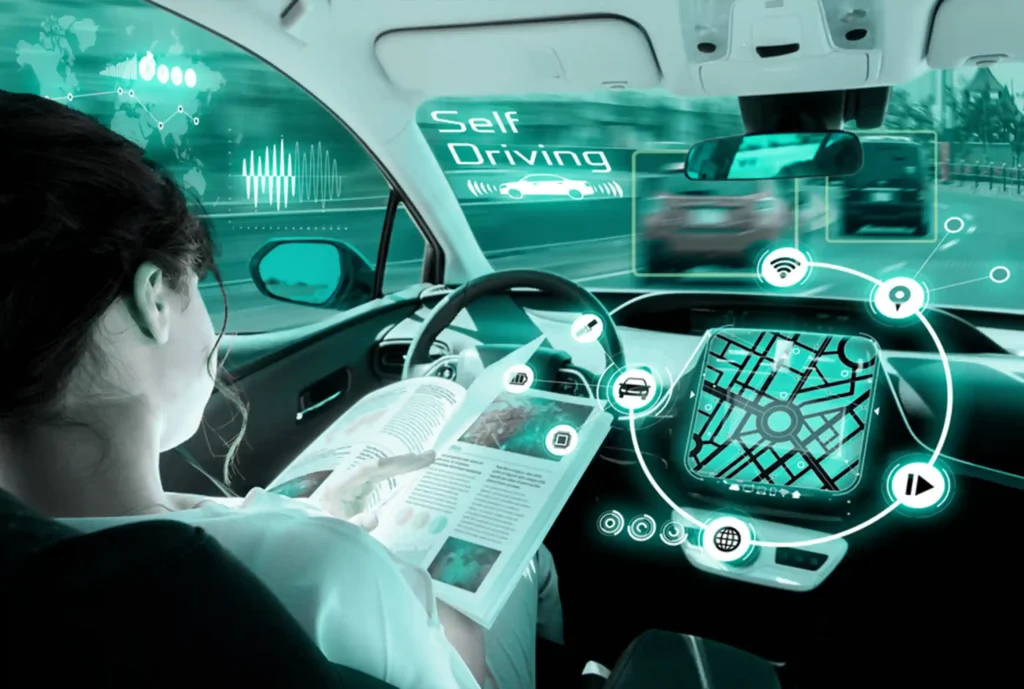Autonomous systems, commonly called intelligent autonomous systems (IAS) or robotics and this systems (RAS), represent technological progress’s cutting-edge technological progress. Transportation, healthcare, industry, and agriculture are just a few of the areas that these systems are transforming. We go into the world of this systems in this detailed overview, looking at their definitions, uses, difficulties, and potential.
Understanding Autonomous Systems
Technologies called autonomous systems are made to carry out operations and make choices with a minimum of human input. These systems use artificial intelligence (AI), sophisticated algorithms, sensors, actuators, and data analysis to detect the environment, process information, and take independent action. They work in dynamic, unexpected situations, adjusting to new circumstances to meet certain objectives.

Key Components of Autonomous Systems
Sensors: For this AI systems to understand their surroundings, sensors are important. They collect environmental data for the system, which is necessary for making defensible decisions. LiDAR, radar, GPS, cameras, and ultrasonic detectors are examples of common sensors. For example, a combination of these sensors is used by driverless cars to identify traffic lights, lane markers, and obstructions.
Actuators: Actuators are the tools that carry out the system’s judgments. They convert instructions from the system into actual acts. Actuators in robotics and this AI systems could include motors that manage arms, wheels, or other mechanical components. Actuators regulate acceleration, braking, and steering in self-driving cars.
Control Algorithms: These algorithms analyze sensor data and decide what steps the system should take in response. Simple rule-based systems to advanced machine learning models are all examples of these methods. Real-time data is used by advanced control algorithms to maximize performance and adjust to changing circumstances.
Communication Systems: Cloud servers, other autonomous devices, or central control units are just a few examples of the other systems that autonomous systems frequently need to connect with. To share information, receive updates, and coordinate actions, reliable communication is necessary. In this case, technologies like dedicated short-range communications (DSRC) and 5G are important.
Applications of Autonomous Systems
Transportation: Autonomous vehicles are transforming the way we commute, transport goods, and carry out surveillance flights. Examples of these vehicles include self-driving automobiles, drones, and unmanned aerial vehicles (UAVs). LiDAR, cameras, and GPS are some of the sensors that these cars implement to navigate roadways, avoid obstructions, and maintain safety.
Healthcare: The use of autonomous medical equipment, medical drones for emergency response, and robotic surgery systems is improving patient care, surgical accuracy, and accessibility to healthcare. In difficult circumstances, these systems provide remote diagnosis, surgery, and drug delivery.
Manufacturing: The use of autonomous and collaborative robots, or cobots, reduces human error, increasing efficiency, and simplifying production processes. In factories and warehouses, these robots carry out jobs including assembling, packaging, and quality monitoring.
Agriculture: Improving crop management, tracking soil health, and increasing crop output are the goals of automated farming systems, autonomous tractors, and agricultural drones. These systems analyze agricultural conditions and implement focused interventions using sensors and AI algorithms.
Space exploration: Scientific research, communication, and astronomical object exploration are all being carried out by autonomous satellites, rovers, and spacecraft. These systems function in difficult circumstances with little human supervision.
Challenges and Considerations
Safety: It is important to ensure the safety of autonomous systems, particularly in critical sectors like healthcare and transportation. Strong validation, testing, and fail-safe procedures are necessary to stop accidents and malfunctions.
Legal and Ethical Issues: Concerns about privacy, accountability, and decision-making are brought up by this AI systems. Ethical frameworks and collaboration across disciplines are needed for solving these problems.
Reliability and Performance: Continuous optimization, monitoring, and maintenance are necessary to achieve high reliability and performance in autonomous systems. System behavior prediction in dynamic and complicated contexts is a major technical issue.
Interoperability: Providing smooth communication, ensuring compatibility, and integrating this AI systems with current infrastructure and systems are important aspects for successful deployment and scalability.
Prospects of Autonomous Systems
The future of autonomous systems holds immense potential for innovation and transformation:
AI advancements: new developments in machine learning, deep learning, and AI algorithms are improving the capacities of this AI systems, allowing them to take in knowledge from data, adjust to new circumstances, and make wise choices.
IoT Integration: To collect real-time data, improve situational awareness, and provide predictive analytics, autonomous systems will increasingly make use of the Internet of Things (IoT) ecosystem. They will do this by establishing connections with smart devices, sensors, and cloud platforms.
Human-Robot Collaboration: Augmented reality interfaces, natural language processing, and collaborative robots will make it easier for people to connect and work together with this AI systems, resulting in safer and more effective workflows.
Industry-Specific Solutions: Customized solutions for sectors like energy, healthcare, logistics, and agriculture will encourage innovation and solve issues unique to their industry, opening fresh possibilities for automation and optimization.
FAQS
Autonomous systems are self-governing, intelligent machines capable of performing tasks without human intervention, using AI, sensors, and algorithms to make decisions and adapt to changing environments.
Designing and developing self-operating devices and systems is the main goal of autonomous systems engineering, which integrates robotics, artificial intelligence, and control systems to produce intelligent, self-sufficient solutions for a range of industries.
The Border Gateway Protocol (BGP) connects multiple autonomous systems, facilitating the exchange of routing information and ensuring efficient, reliable data transfer across different networks.
Conclusion
Technology has experienced an important shift with this AI systems, which are changing sectors and improving human capacities. Self-driving automobiles, robotic surgery, intelligent agriculture, and space exploration the uses of this AI systems are many and important. Working together, being innovative, and considering ethics will be important to advancing as we negotiate the opportunities and difficulties presented by these technological frontiers. Adopting ethically and responsibly autonomous systems could open the way for a time when technology will allow us to do amazing things and enhance people’s lives all around the world.
